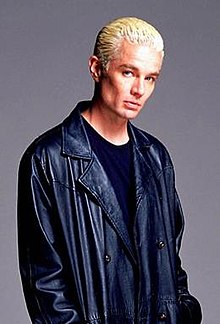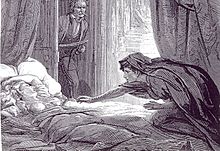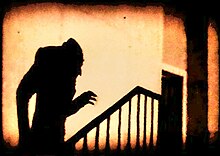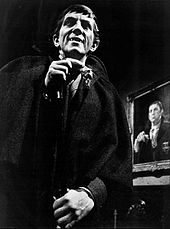this is a Credit Card Size fun novelty rendition of an official identification card.
Grrrrrrrr -eetings . here is a fun and fantastic addition to your costume gear, or the perfect gift for any fan.
It is approximately in Size: 3⅛ in. x 2⅜ in. It is constructed of thick plastic.
Thanks most kindly, Harry
Spike (Buffy the Vampire Slayer)
Jump to navigation Jump to search| Spike | |
|---|---|
| Buffy the Vampire Slayer / Angel character | |
 | |
| First appearance | "School Hard" (1997) |
| Last appearance | "Finale" (2018) |
| Created by | Joss Whedon |
| Portrayed by | James Marsters |
| In-universe information | |
| Affiliation | The Whirlwind Scooby Gang Wolfram & Hart |
| Classification | Vampire |
| Notable powers | Common powers of vampires, enhanced |
Spike, played by James Marsters, is a fictional character created by Joss Whedon for the television series Buffy the Vampire Slayer and Angel. Spike is a vampire and played various roles on the shows, including villain, anti-hero, trickster and romantic interest. For Marsters, the role as Spike began a career in science fiction television, becoming "the obvious go-to guy for US cult [television]."[1] For creator Whedon, Spike is the "most fully developed" of his characters.[2] The character was intended to be a brief villain, with Whedon originally adamant to not have another major "romantic vampire" character like Angel. Marsters says "Spike was supposed to be dirty and evil, punk rock, and then dead." However, the character ended up staying for the second season, and then returning in the fourth to replace Cordelia as "the character who told Buffy she was stupid and about to die."[3]
Within the series' narrative, William was an unsuccessful aspiring poet in the Victorian era who was mocked and called "William the Bloody" because of his "bloody awful" poetry. Sired by the vampire Drusilla (Juliet Landau), William became an unusually passionate and romantic vampire, being very violent and ready to battle, but not as cruel as his companions. Alongside Drusilla, Darla (Julie Benz) and Angelus (David Boreanaz), Giles thinks William acquired the nickname Spike for his preferred method of torturing people with railroad spikes, but it is revealed it is because his poetry was "so bad you could stick a railroad spike through your head." He was noted for killing two vampire Slayers; one in China at the end of the 1800s during the Boxer Rebellion, the other was Nicki Wood in 1977 New York, where Spike acquired his trademark leather duster. During the second season of the series, Spike comes to Sunnydale hoping to kill a third Slayer, Buffy Summers (Sarah Michelle Gellar), with whom he later forges an uneasy alliance. Over the course of Buffy, Spike falls in love with the Slayer, reacquires his soul to prove himself to Buffy and dies a hero in the show's series finale. He is subsequently resurrected in the first episode of the fifth season of the spin-off series Angel.
Considered a 'breakout character', Spike proved immensely popular with fans of Buffy.[4] The character appears substantially in Expanded Universe materials such as comic books and tie-in novels. Following the cancellation of Angel in 2004, Whedon considered creating a Spike film spin-off. Canonically, the character appears in issues of the comic books Buffy the Vampire Slayer Season Eight (2007–11), Angel: After the Fall (2007–09), Buffy the Vampire Slayer Season Nine, Angel & Faith (both 2011–2013) and several Spike limited series, spinning off from both Buffy and Angel. Currently the character is in the canonical comic Buffy the Vampire Slayer Season Eleven (2016–2017) and in Buffy the Vampire Slayer Season Twelve (2018).
Literature
The vampire or revenant first appeared in poems such as The Vampire (1748) by Heinrich August Ossenfelder, Lenore (1773) by Gottfried August Bürger, Die Braut von Corinth (The Bride of Corinth) (1797) by Johann Wolfgang von Goethe, Robert Southey's Thalaba the Destroyer (1801), John Stagg's "The Vampyre" (1810), Percy Bysshe Shelley's "The Spectral Horseman" (1810) ("Nor a yelling vampire reeking with gore") and "Ballad" in St. Irvyne (1811) about a reanimated corpse, Sister Rosa, Samuel Taylor Coleridge's unfinished Christabel and Lord Byron's The Giaour.[164]
Byron was also credited with the first prose fiction piece concerned with vampires: "The Vampyre" (1819). This was in reality authored by Byron's personal physician, John Polidori, who adapted an enigmatic fragmentary tale of his illustrious patient, "Fragment of a Novel" (1819), also known as "The Burial: A Fragment".[17][158] Byron's own dominating personality, mediated by his lover Lady Caroline Lamb in her unflattering roman-a-clef Glenarvon (a Gothic fantasia based on Byron's wild life), was used as a model for Polidori's undead protagonist Lord Ruthven. The Vampyre was highly successful and the most influential vampire work of the early 19th century.[165]
Varney the Vampire was a popular landmark mid-Victorian era gothic horror story by James Malcolm Rymer and Thomas Peckett Prest, which first appeared from 1845 to 1847 in a series of pamphlets generally referred to as penny dreadfuls because of their inexpensive price and typically gruesome contents.[157] The story was published in book form in 1847 and runs to 868 double-columned pages. It has a distinctly suspenseful style, using vivid imagery to describe the horrifying exploits of Varney.[162] Another important addition to the genre was Sheridan Le Fanu's lesbian vampire story Carmilla (1871). Like Varney before her, the vampiress Carmilla is portrayed in a somewhat sympathetic light as the compulsion of her condition is highlighted.[166]
No effort to depict vampires in popular fiction was as influential or as definitive as Bram Stoker's Dracula (1897).[167] Its portrayal of vampirism as a disease of contagious demonic possession, with its undertones of sex, blood and death, struck a chord in Victorian Europe where tuberculosis and syphilis were common. The vampiric traits described in Stoker's work merged with and dominated folkloric tradition, eventually evolving into the modern fictional vampire.[157]
Drawing on past works such as The Vampyre and Carmilla, Stoker began to research his new book in the late 19th century, reading works such as The Land Beyond the Forest (1888) by Emily Gerard and other books about Transylvania and vampires. In London, a colleague mentioned to him the story of Vlad Ţepeş, the "real-life Dracula", and Stoker immediately incorporated this story into his book. The first chapter of the book was omitted when it was published in 1897, but it was released in 1914 as "Dracula's Guest".[168] Many experts believe, this deleted opening was based on the Austrian princess Eleonore von Schwarzenberg.[169]
The latter part of the 20th century saw the rise of multi-volume vampire epics. The first of these was Gothic romance writer Marilyn Ross's Barnabas Collins series (1966–71), loosely based on the contemporary American TV series Dark Shadows. It also set the trend for seeing vampires as poetic tragic heroes rather than as the more traditional embodiment of evil. This formula was followed in novelist Anne Rice's highly popular and influential Vampire Chronicles (1976–2003).[170]
The 21st century brought more examples of vampire fiction, such as J. R. Ward's Black Dagger Brotherhood series, and other highly popular vampire books which appeal to teenagers and young adults. Such vampiric paranormal romance novels and allied vampiric chick-lit and vampiric occult detective stories are a remarkably popular and ever-expanding contemporary publishing phenomenon.[171] L. A. Banks' The Vampire Huntress Legend Series, Laurell K. Hamilton's erotic Anita Blake: Vampire Hunter series, and Kim Harrison's The Hollows series, portray the vampire in a variety of new perspectives, some of them unrelated to the original legends. Vampires in the Twilight series (2005–2008) by Stephenie Meyer ignore the effects of garlic and crosses and are not harmed by sunlight, although it does reveal their supernatural status.[172] Richelle Mead further deviates from traditional vampires in her ''Vampire Academy'' series (2007–present), basing the novels on Romanian lore with two races of vampires, one good and one evil, as well as half-vampires.[173]
Film and television
Considered one of the preeminent figures of the classic horror film, the vampire has proven to be a rich subject for the film and gaming industries. Dracula is a major character in more films than any other but Sherlock Holmes, and many early films were either based on the novel Dracula or closely derived from it. These included the 1922 German silent film Nosferatu, directed by F. W. Murnau and featuring the first film portrayal of Dracula—although names and characters were intended to mimic Dracula's, Murnau could not obtain permission to do so from Stoker's widow, and had to alter many aspects of the story for the film. Universal's Dracula (1931), starring Béla Lugosi as the Count, was the first talking film to portray Dracula. The decade saw several more vampire films, most notably Dracula's Daughter in 1936.[174]
The legend of the vampire continued through the film industry when Dracula was reincarnated in the pertinent Hammer Horror series of films, starring Christopher Lee as the Count. The successful 1958 Dracula starring Lee was followed by seven sequels. Lee returned as Dracula in all but two of these and became well known in the role.[175] By the 1970s, vampires in films had diversified with works such as Count Yorga, Vampire (1970), an African Count in 1972's Blacula, the BBC's Count Dracula featuring French actor Louis Jourdan as Dracula and Frank Finlay as Abraham Van Helsing, and a Nosferatu-like vampire in 1979's Salem's Lot, and a remake of Nosferatu itself, titled Nosferatu the Vampyre with Klaus Kinski the same year. Several films featured the characterization of a female, often lesbian, vampire such as Hammer Horror's The Vampire Lovers (1970), based on Carmilla, though the plotlines still revolved around a central evil vampire character.[175]
The Gothic soap opera Dark Shadows, on American television from 1966 to 1971 and produced by Dan Curtis, featured the vampire character Barnabas Collins, portrayed by Canadian actor Jonathan Frid, which proved partly responsible for making the series one of the most popular of its type, amassing a total of 1,225 episodes in its nearly five-year run. The pilot for the later Dan Curtis 1972 television series Kolchak: The Night Stalker revolved around reporter Carl Kolchak hunting a vampire on the Las Vegas Strip. Later films showed more diversity in plotline, with some focusing on the vampire-hunter, such as Blade in the Marvel Comics' Blade films and the film Buffy the Vampire Slayer.[157] Buffy, released in 1992, foreshadowed a vampiric presence on television, with its adaptation to a long-running hit series of the same name and its spin-off Angel. Still others showed the vampire as a protagonist, such as 1983's The Hunger, 1994's Interview with the Vampire and its indirect sequel of sorts Queen of the Damned, and the 2007 series Moonlight. The 1992 film Bram Stoker's Dracula became the then-highest grossing vampire film ever.[176]
In his documentary "Vampire Princess" (2007) the investigative Austrian author and director Klaus T. Steindl discovered in 2007 the historical inspiration for Bram Stoker's legendary Dracula character (see also Literature - Bram Stoker: Dracula's Guest[168]): "Many experts believe, the deleted opening was actually based on a woman. Archaeologists, historians, and forensic scientists revisit the days of vampire hysteria in the eighteenth-century Czech Republic and re-open the unholy grave of dark princess Eleonore von Schwarzenberg. They uncover her story, once buried and long forgotten, now raised from the dead."[169]
This increase of interest in vampiric plotlines led to the vampire being depicted in films such as Underworld and Van Helsing, the Russian Night Watch and a TV miniseries remake of Salem's Lot, both from 2004. The series Blood Ties premiered on Lifetime Television in 2007, featuring a character portrayed as Henry Fitzroy, an illegitimate-son-of-Henry-VIII-of-England-turned-vampire, in modern-day Toronto, with a female former Toronto detective in the starring role. A 2008 series from HBO, entitled True Blood, gives a Southern Gothic take on the vampire theme.[172]
In 2008 the BBC Three series Being Human became popular in Britain. It featured an unconventional trio of a vampire, a werewolf and a ghost who are sharing a flat in Bristol.[177][178] Another popular vampire-related show is CW's The Vampire Diaries. The continuing popularity of the vampire theme has been ascribed to a combination of two factors: the representation of sexuality and the perennial dread of mortality.[179]
Games
The role-playing game Vampire: The Masquerade has been influential upon modern vampire fiction and elements of its terminology, such as embrace and sire, appear in contemporary fiction.[157] Popular video games about vampires include Castlevania, which is an extension of the original Bram Stoker novel Dracula, and Legacy of Kain.[180] The role-playing game Dungeons & Dragons features vampires.[181]
People's Choice Awards
From Wikipedia, the free encyclopedia
People's Choice Awards
43rd People's Choice Awards
People's Choice Awards logo.svg
Country United States
First awarded March 3, 1975
Official website peopleschoice.com
Television/radio coverage
Network CBS
The People's Choice Awards is an American awards show, recognizing the people and the work of popular culture, voted on by the general public.[1] The show has been held annually since 1975.[2][3] The People's Choice Awards is broadcast on CBS and is produced by Procter & Gamble and Mark Burnett. In Canada, it is shown on Global. On April 6, 2017, E! announced they would begin airing the show in 2018; they also announced they would begin overseeing the awards' digital, social and voting platforms.[4]
The award show's creator was Bob Stivers, who produced the first show in 1975.[5][6] The first awards recognized The Sting as Favorite Picture of 1974, Barbra Streisand as the year's Favorite Film Actress, and John Wayne as its Favorite Film Actor.[7] Ratings for the annual event peaked in 1977, when the third People's Choice Awards attracted 35.3 million viewers who witnessed Farrah Fawcett win the award for Favorite Female TV Star, Star Wars win as the Favorite Picture, and Streisand and Wayne win again in the Film Actress and Actor categories.
Ceremonies
# Date Host # Date Host # Date Host
1st March 3, 1975 Army Archerd
Richard Crenna 21st March 5, 1995 Tim Daly
Annie Potts 41st January 7, 2015 Anna Faris
Allison Janney
2nd February 19, 1976 Jack Albertson 22nd March 10, 1996 Brett Butler 42nd January 6, 2016 Jane Lynch
3rd February 10, 1977 Dick Van Dyke 23rd January 12, 1997 Don Johnson
Roma Downey 43rd January 18, 2017 Joel McHale
4th February 20, 1978 24th January 11, 1998 Reba McEntire
Ray Romano
5th March 7, 1979 Army Archerd
Dick Van Dyke 25th January 13, 1999 Ray Romano
6th January 24, 1980 Mariette Hartley
Bert Parks 26th January 9, 2000 Don Johnson
Cheech Marin
7th March 8, 1981 Army Archerd
Lee Remick 27th January 7, 2001 Kevin James
8th March 18, 1982 Army Archerd
John Forsythe 28th January 13, 2002
9th March 17, 1983 Dick Van Dyke 29th January 12, 2003 Tony Danza
10th March 15, 1984 Andy Williams 30th January 11, 2004 Charlie Sheen
Jon Cryer
11th March 12, 1985 John Forsythe 31st January 9, 2005 Jason Alexander
Malcolm Jamal Warner
12th March 13, 1986 John Denver 32nd January 10, 2006 Craig Ferguson
13th March 14, 1987 Dick Van Dyke 33rd January 9, 2007 Queen Latifah
14th March 13, 1988 Carl Reiner 34th January 8, 2008
15th August 23, 1989 Michael Landon
Michele Lee 35th January 7, 2009
16th March 11, 1990 Valerie Harper
Fred Savage
Army Archerd
Barbara Mandrell 36th January 6, 2010
17th March 11, 1991 Burt Reynolds 37th January 5, 2011
18th March 17, 1992 Kenny Rogers 38th January 11, 2012 Kaley Cuoco
19th March 17, 1993 John Ritter
Jane Seymour 39th January 9, 2013
20th March 8, 1994 Paul Reiser 40th January 8, 2014 Beth Behrs
Kat Dennings




